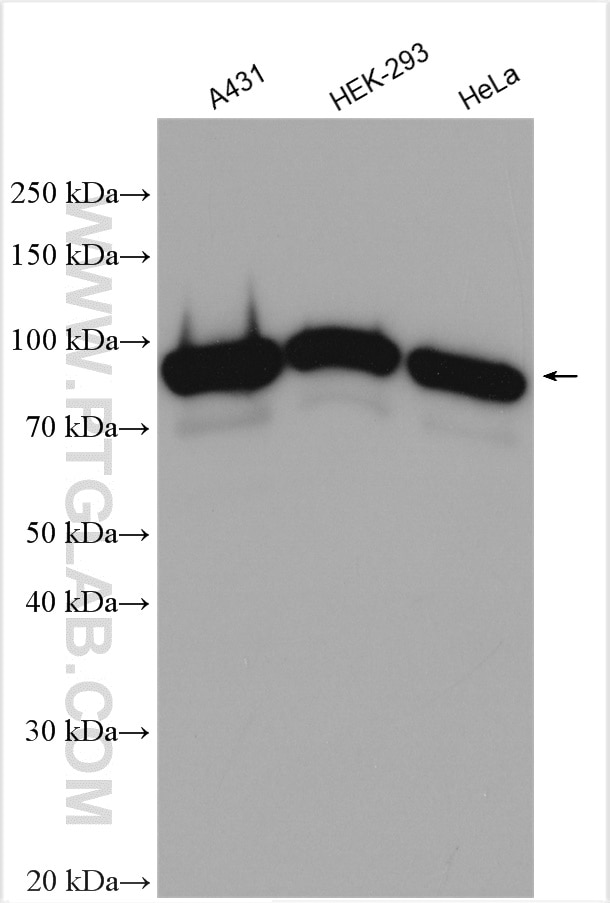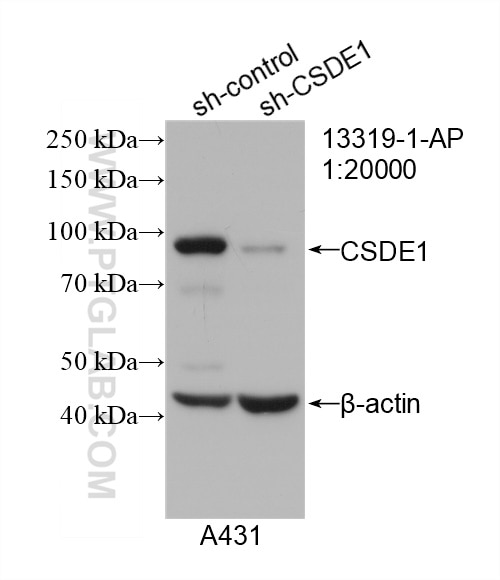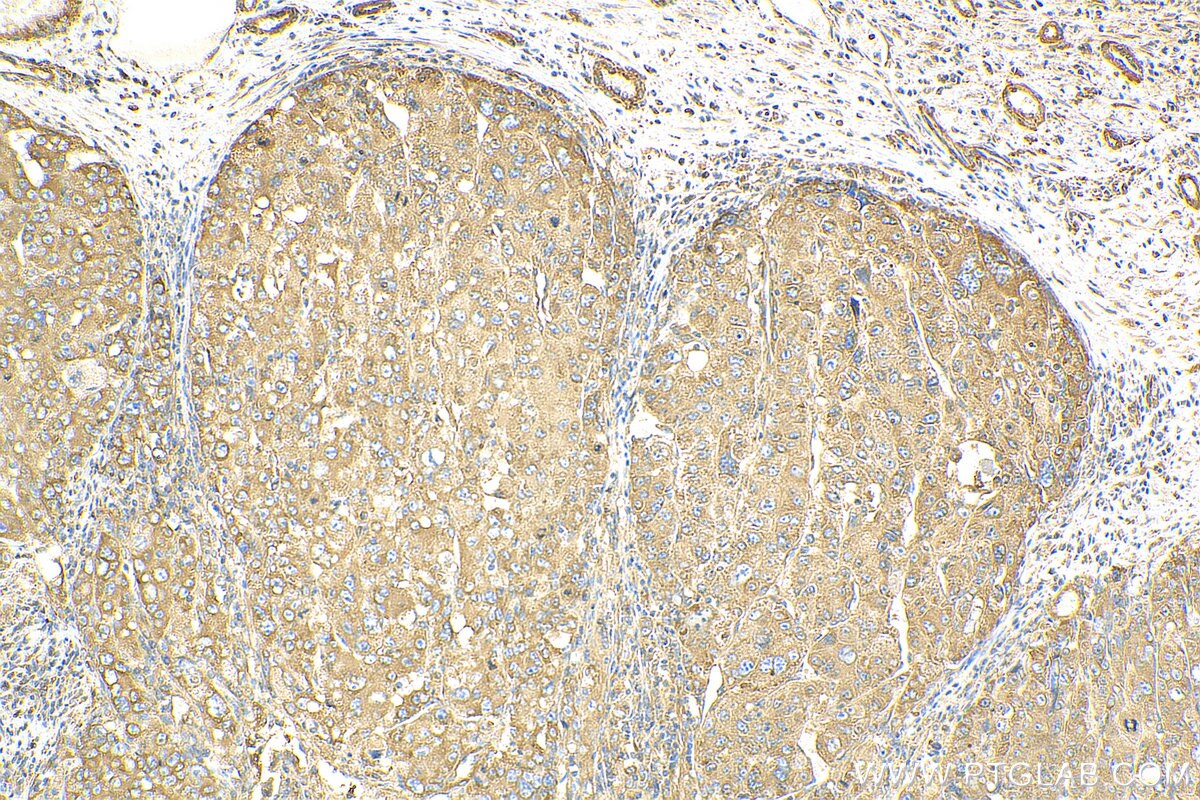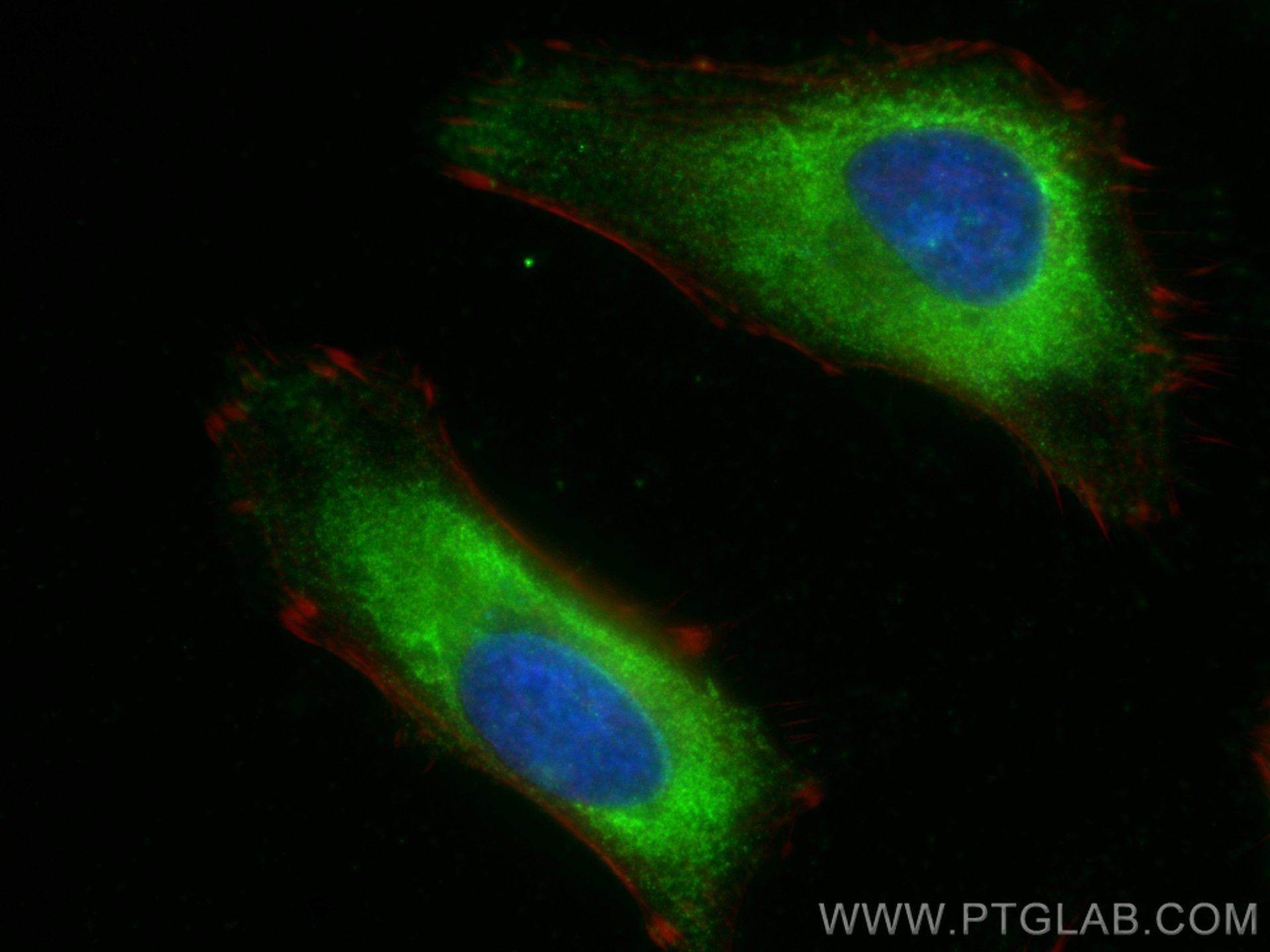- Phare
- Validé par KD/KO
Anticorps Polyclonal de lapin anti-CSDE1
CSDE1 Polyclonal Antibody for WB, IF, IHC, ELISA
Hôte / Isotype
Lapin / IgG
Réactivité testée
Humain, souris
Applications
WB, IHC, IF/ICC, ELISA
Conjugaison
Non conjugué
N° de cat : 13319-1-AP
Synonymes
Galerie de données de validation
Applications testées
| Résultats positifs en WB | cellules A431, cellules HEK-293, cellules HeLa |
| Résultats positifs en IHC | tissu de cancer du foie humain, il est suggéré de démasquer l'antigène avec un tampon de TE buffer pH 9.0; (*) À défaut, 'le démasquage de l'antigène peut être 'effectué avec un tampon citrate pH 6,0. |
| Résultats positifs en IF/ICC | cellules HeLa, |
Dilution recommandée
| Application | Dilution |
|---|---|
| Western Blot (WB) | WB : 1:2000-1:14000 |
| Immunohistochimie (IHC) | IHC : 1:50-1:500 |
| Immunofluorescence (IF)/ICC | IF/ICC : 1:50-1:500 |
| It is recommended that this reagent should be titrated in each testing system to obtain optimal results. | |
| Sample-dependent, check data in validation data gallery | |
Applications publiées
| KD/KO | See 2 publications below |
| WB | See 5 publications below |
Informations sur le produit
13319-1-AP cible CSDE1 dans les applications de WB, IHC, IF/ICC, ELISA et montre une réactivité avec des échantillons Humain, souris
| Réactivité | Humain, souris |
| Réactivité citée | Humain, souris |
| Hôte / Isotype | Lapin / IgG |
| Clonalité | Polyclonal |
| Type | Anticorps |
| Immunogène | CSDE1 Protéine recombinante Ag4173 |
| Nom complet | cold shock domain containing E1, RNA-binding |
| Masse moléculaire calculée | 798 aa, 89 kDa |
| Poids moléculaire observé | 89 kDa |
| Numéro d’acquisition GenBank | BC032446 |
| Symbole du gène | CSDE1 |
| Identification du gène (NCBI) | 7812 |
| Conjugaison | Non conjugué |
| Forme | Liquide |
| Méthode de purification | Purification par affinité contre l'antigène |
| Tampon de stockage | PBS avec azoture de sodium à 0,02 % et glycérol à 50 % pH 7,3 |
| Conditions de stockage | Stocker à -20°C. Stable pendant un an après l'expédition. L'aliquotage n'est pas nécessaire pour le stockage à -20oC Les 20ul contiennent 0,1% de BSA. |
Informations générales
CSDE1 (Cold shock domain-containing protein E1), also known as UNR (upstream of N-ras), is an RNA-binding protein involved in the regulation of messenger RNA stability and internal initiation of translation. It is required for internal initiation of translation of human rhinovirus RNA. UNR may be involved in translationally coupled mRNA turnover. Reduced expression of UNR impairs proliferation and differentiation of erythroid blasts. Recent study found that UNR acts as a positive or negative regulator of cell death, depending on the cell type, suggesting manipulation of UNR level may constitute a specific approach to sensitize cancer cells to anticancer treatments.
Protocole
| Product Specific Protocols | |
|---|---|
| WB protocol for CSDE1 antibody 13319-1-AP | Download protocol |
| IHC protocol for CSDE1 antibody 13319-1-AP | Download protocol |
| IF protocol for CSDE1 antibody 13319-1-AP | Download protocol |
| Standard Protocols | |
|---|---|
| Click here to view our Standard Protocols |
Publications
| Species | Application | Title |
|---|---|---|
Nat Protoc Global analysis of RNA-binding protein dynamics by comparative and enhanced RNA interactome capture. | ||
Nat Commun Discovery of RNA-binding proteins and characterization of their dynamic responses by enhanced RNA interactome capture. | ||
Blood Ribosomal deficiencies in Diamond-Blackfan anemia impair translation of transcripts essential for differentiation of murine and human erythroblasts.
| ||
Viruses Upstream of N-Ras (Unr/CSDE1) Interacts with NCp7 and Gag, Modulating HIV-1 IRES-Mediated Translation Initiation
| ||
Nat Commun Systematic analysis of RNA-binding proteins identifies targetable therapeutic vulnerabilities in osteosarcoma |





